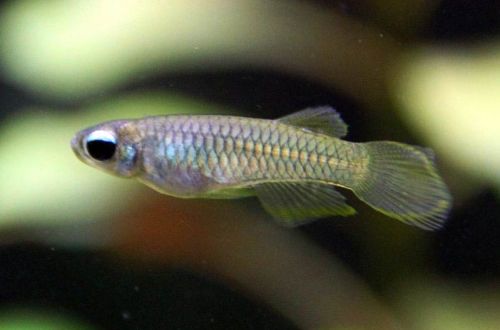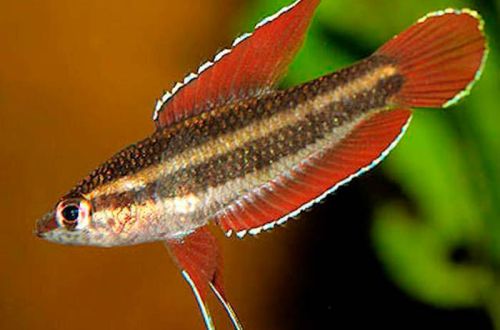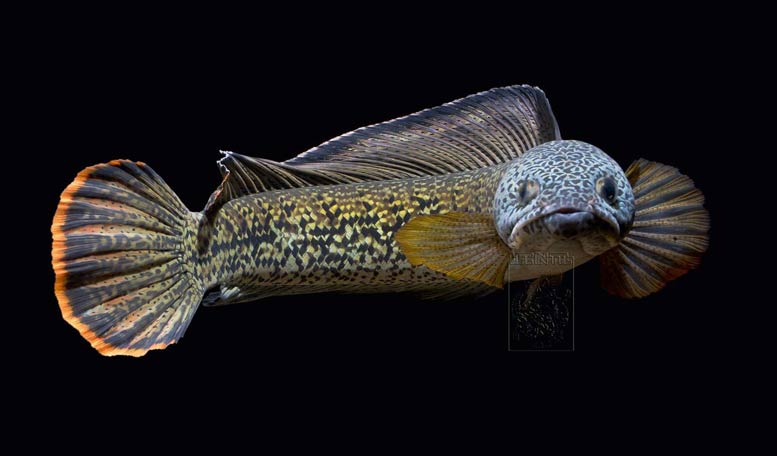
snakeheads
Snakeheads are predatory species of fish of the genus Channa, members of the Channidae family. They got their name for the characteristic flattened shape of the head and the presence of scales on it, similar to large epidermal scales in snakes.
Contents
barque snakehead
 Snakehead barque, photography Jibran Mohammed Sharif
Snakehead barque, photography Jibran Mohammed Sharif
Initially, the natural habitat was limited to the Asian region from Iran and eastern Afghanistan to the islands of Indonesia, including all of Southeast Asia.
At present, snakeheads have been brought to other regions, in particular, to China, Russia (the Amur River basin), the countries of Central Asia, Korea, Japan, the USA, the island of Madagascar, the Fiji archipelago and others.
In some regions they were brought for cultivation as commercial fish, in others they ended up in the wild through the fault of aquarists. In most cases, Snakeheads successfully adapted to life in a new habitat for themselves. In the absence of natural enemies, they have become apex predators, which has led to significant environmental problems. The greatest damage to the local fauna was recorded in the United States, where since 2002 the possession of these fish has been limited at the legislative level.
The high adaptability of Snakeheads is due to their endurance and unpretentiousness to living conditions. These fish can live in a wide range of temperatures and pH and GH values. They are tolerant of low concentrations of dissolved oxygen in water and are even able to go without water for a long time (up to 4 days), provided that they retain body moisture. For breathing, in addition to gills, a special organ is used, reminiscent of that of Labyrinth fish.
Due to the ability to breathe atmospheric air, fish can move between water bodies on a damp substrate. Wriggling like snakes, they travel long distances. The maximum distance that could be recorded was 400 meters.
Another important competitive advantage is promiscuity in food. Being predators, they eat everything that they can put in their mouths – these can be small fish, amphibians, crustaceans, insects, worms, etc. They do not disdain carrion.
Such features allow Snakeheads to quickly expand their habitat. This is also facilitated by a high reproduction rate and parental care for offspring. Depending on the species, each mature female can produce more than 10-15 thousand eggs and spawn up to 5 times a year.
Content in aquariums
Juveniles are relatively small, brightly colored and peacefully disposed towards other species, preferring to be in large flocks. All this makes them a good option in the eyes of aquarists who are looking for an unusual predatory fish.
However, many do not take into account that in the adult state, the Snakehead is greatly transformed. This is manifested both in size and color (bright colors are lost), and in a change in behavior – the fish become aggressive and territorial.
Not all aquarists are ready for such changes. As a result, some of them make the wrong choice when releasing fish into the wild.
Channa andrao snakehead in the aquarium
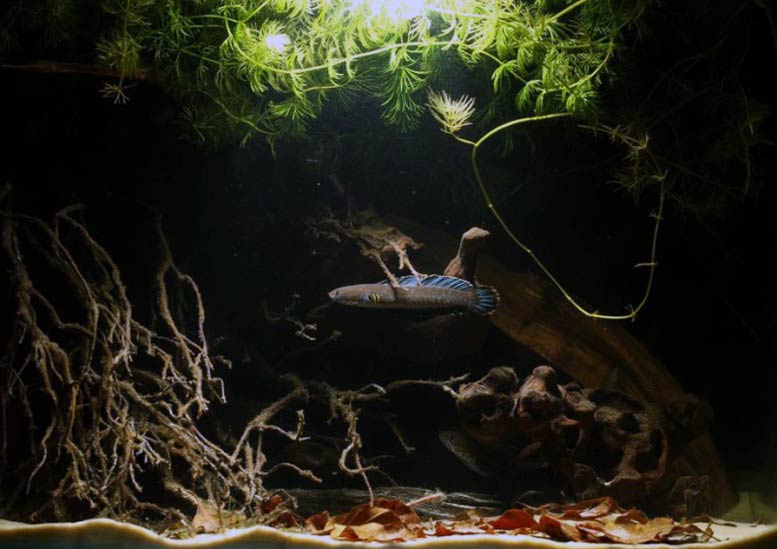 Channa andrao snakehead in a dimly lit aquarium among submerged branches, leaf litter and surface vegetation. Photographer Colin Dunlop
Channa andrao snakehead in a dimly lit aquarium among submerged branches, leaf litter and surface vegetation. Photographer Colin Dunlop
Otherwise, the maintenance is quite simple, if a spacious aquarium and equipment corresponding to its size are provided. Not demanding on the choice of design. Most of the time, with the exception of feeding periods, they “soar” in the water column or rest on the bottom, periodically floating to the surface to swallow air. Thus, it is permissible to use large boulders, stones, snags and thickets of plants as decor, forming various shelters and secluded places from them. The presence of floating plants that shade the aquarium is welcome.
During feeding, they are active, creating powerful bursts of water. They tend to overturn design elements and shake up the substrate. For this reason, the use of sandy soils is not recommended. Suspended sand can get into the filtration system and damage it.
When the water level is high, the fish often leave the tank. The presence of a cover prevents such a development of events and is mandatory. For the above reasons, there must be an air gap between the lid and the water surface.
There is a common misconception that air-breathing fish that live in the wild in stagnant and relatively dirty water do not need a clean aquarium.
Some species are indeed able to tolerate sometimes extreme changes in their environment, such as pH fluctuations from 4,3 to 9,4 over several days, as well as long journeys overland between water bodies. But all this is on the verge of survival and is not the norm.
Like any living creature, Snakeheads will feel most comfortable in a relatively stable environment. Some species may require a seasonal change in water temperature during the winter and summer periods.
Food
They accept live foods, but in home aquaria it is more convenient to use alternative fresh or frozen foods. These can be pieces of fish meat, shrimp, mussels, large earthworms, etc.
Compatibility
Given the predatory lifestyle, any small fish will be considered as food. Only large mobile species living in the water column or near the surface can be considered as aquarium neighbors. Bottom dwellers such as catfish should be excluded due to the territorial behavior of adult Snakeheads.
Intraspecific relationships change over time. Young fish live in large groups, but when they reach puberty they become loners and jealously, sometimes aggressively, treat their relatives.
In some cases, breeders were able to form a pair of male and female, which could get along with each other and give offspring, as happens in the wild. However, this requires a large group of young individuals, among which a pair may occur with a small degree of probability. In home aquariums, this is not feasible.
Thus, we can formulate a simple rule – one aquarium – one snakehead. Possibly in company with several other species.
Sources of information: Wikipedia, PracticalFishkeeping
Popular Types of Snakeheads
Pick up fish with a filter
African snakehead
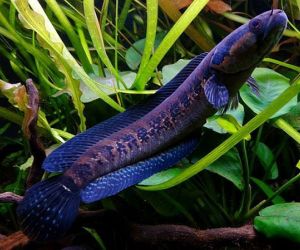
andrao snakehead
Ocellated snakehead
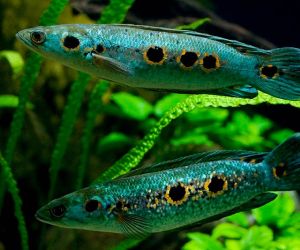
Snakehead pulchera
rainbow snakehead
Snakehead “Golden Cobra”
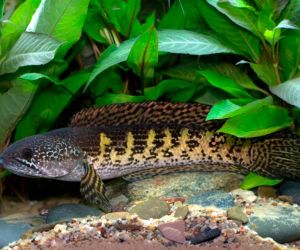
Pygmy snakehead
Red Snakehead




